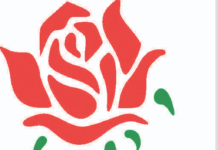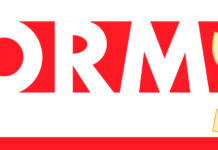The 70th anniversary of Canadian-Cuban diplomatic relations is the subject of the latest exhibit at Themuseum: <em>The Havana Dialogues — 70 Years of Canadian-Cuban Diplomatic Relations</em>. A large Cuban flag marks the entrance of the exhibit and leads to the hall where the official opening took place Nov. 1 with guest of honour Julio Garmendia Peña, the Cuban ambassador to Canada.</p>
The Havana Dialogues is largely a photography exhibit that aims to both display the everyday life in Cuba and highlight the diplomatic ties between Canada and Cuba.
In his remarks, Peña noted that Canada was a great friend of Cuba. Not only is it one of two nations to have not broken diplomatic relations during the revolution, it has also played a key part in the recent negotiations between the U.S. and Cuba which were held largely in Ottawa.
“There was a moment when Cuba only had [diplomatic] relations with Canada and with Mexico, and that, I am sure, gave us life. We had trade products from Canada, but mainly spiritually it enriched our will to resist and to continue, and I can assure you that it was not easy,” said Peña. “The fact that Canada maintained those relations during those 70 years we have worked together is very, very encouraging for our people and for our nation.”
The core of the diplomatic side of the exhibit is a collection of black and white photos of state visits that display this long-lasting relationship. There are several photos of both Prime Minister Jean Chretien and Pierre Elliot Trudeau visiting Cuba. There is also a photo of a Canadian journalist interviewing Fidel Castro in the Sierra Madre during the revolution and of Castro giving a speech in Canada. Photos of Castro visiting a hospital in Montreal and attending Trudeau’s state funeral are also part of the exhibit.
The everyday aspects of the exhibition included a look at cigar making, baseball, agriculture, and tourism. These aspects were echoed in Peña’s speech, as he listed off examples of business, cultural, and sport partnerships between the two nations.
The cigar making was highlighted not only in photos, but also in posters that outlined the different types of cigars and models of Cubans making and enjoying cigars. The tourism display included a variety of souvenirs and tourist guides which would be familiar to Canadians who have visited the country. Cuban baseball jerseys add to the athletic narrative.
The sprinkling of these items throughout the hall brings an additional element of interest beyond the photos and provides familiar touches for the large number of Canadians who have experienced Cuba.
In a corner of the exhibit, we also found a small area dedicated to Papal visits, perhaps in a nod to the role that the Vatican also played in brokering the rapproachement talks between the U.S. and Cuba.
The exhibit is also accompanied by several events and discussions, including a visit by Dr. Mariela Castro Espin, the director of the Cuban National Center for Sex Education and daughter of Cuban President Raul Castro, film showings, and a Cuban party.
“The dialogues series … allows us to dig a little deeper. The series of speakers and performances, the films and so on, if people come to all of them — and many people tend to come to all of them — allow you to drill down a bit, and you really get a better understanding about different aspects of the country, ” said David Marskell, CEO of Themuseum.
The small photograph of a younger Justin Trudeau and Fidel Castro hugging after the elder Trudeau’s funeral as you exit the exhibition is perhaps a fitting conclusion and a nod towards the future of the relationship between the two nations.






























